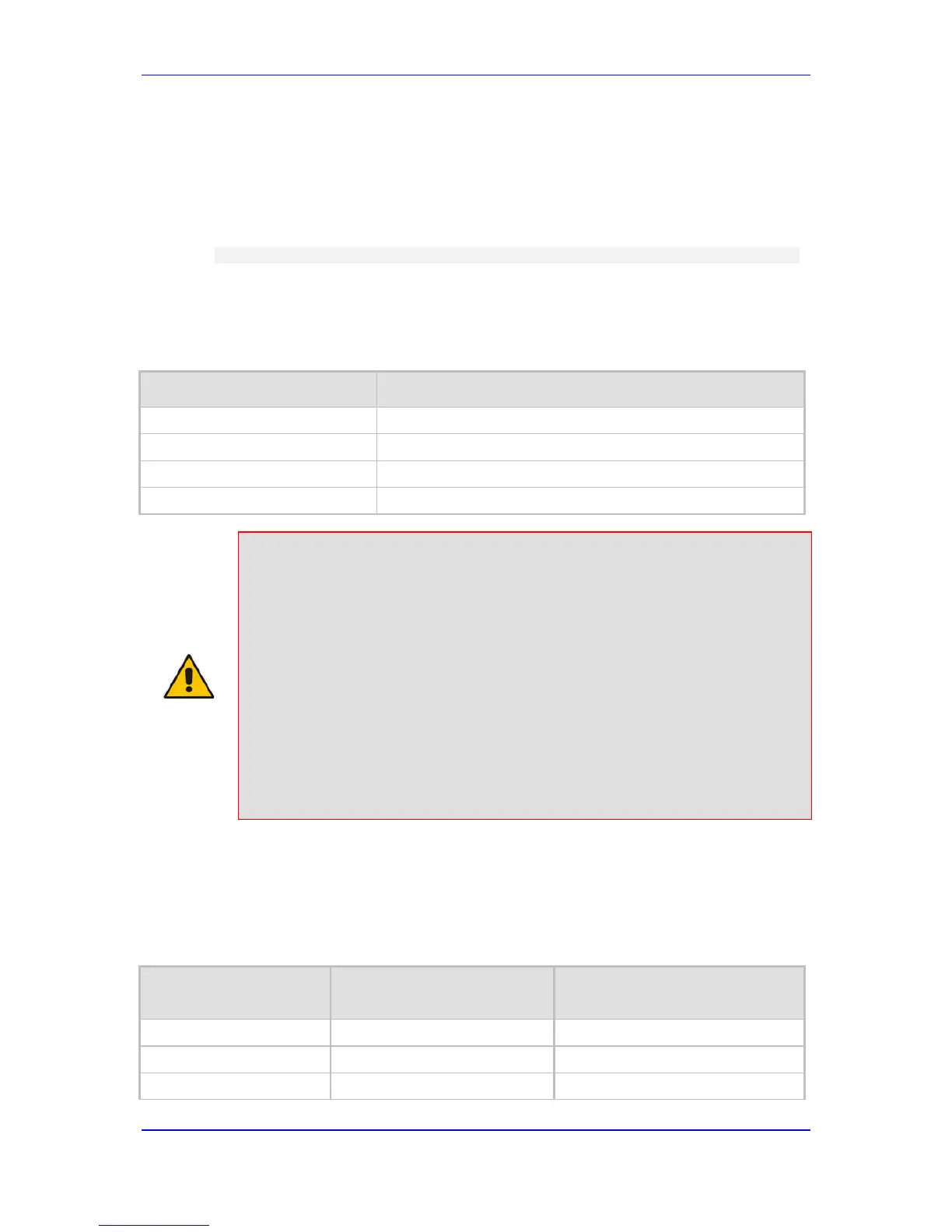The device automatically interworks the network identity digits (NI) in the ISDN Q.931
Precedence Information Element (IE) to the network domain subfield of the INVITE's
Resource-Priority header, and vice versa. The SIP Resource-Priority header contains two
fields, namespace and priority. The namespace is subdivided into two subfields, network-
domain and precedence-domain. Below is an example of a Resource-Priority header
whose network-domain subfield is "uc", r-priority field is "priority" (2), and precedence-
domain subfield is "000000":
Resource-Priority: uc-000000.2
The MLPP Q.931 Setup message contains the Precedence IE. The NI digits are presented
by four nibbles found in octets 5 and 6. The device checks the NI digits according to the
translation table of the Department of Defense (DoD) Unified Capabilities (UC)
Requirements (UCR 2008, Changes 3) document, as shown below:
NI Digits in ISDN Precedence
Level IE Network Domain in SIP Resource-Priority Header
0000 uc
0001 cuc
0002 dod
0003 nato
Notes:
• If the received ISDN message contains NI digits that are not listed in the
translation table, the device sets the network-domain to "uc" in the
outgoing SIP message.
• If the received SIP message contains a network-domain value that is not
listed in the translation table, the device sets the NI digits to "0000" in the
outgoing ISDN message.
• If the received ISDN message does not contain a Precedence IE, you
can configure the namespace value - dsn (default), dod, drsn, uc, or cuc
- in the SIP Resource-Priority header of the outgoing INVITE message.
If the network-domain field in the Resource-Priority header is "uc", then the device
sets the Precedence Level field in the ISDN PRI Precedence Level IE according to
Table 5.3.2.12-4 (Mapping of RPH r-priority Field to PRI Precedence Level Value):
Mapping of SIP Resource-Priority Header to PRI Precedence Level for MLPP
MLPP Precedence Level PRI Precedence Level SIP Resource-Priority Header
Field
Routine 4 0
Priority 3 2
Immediate 2 4

